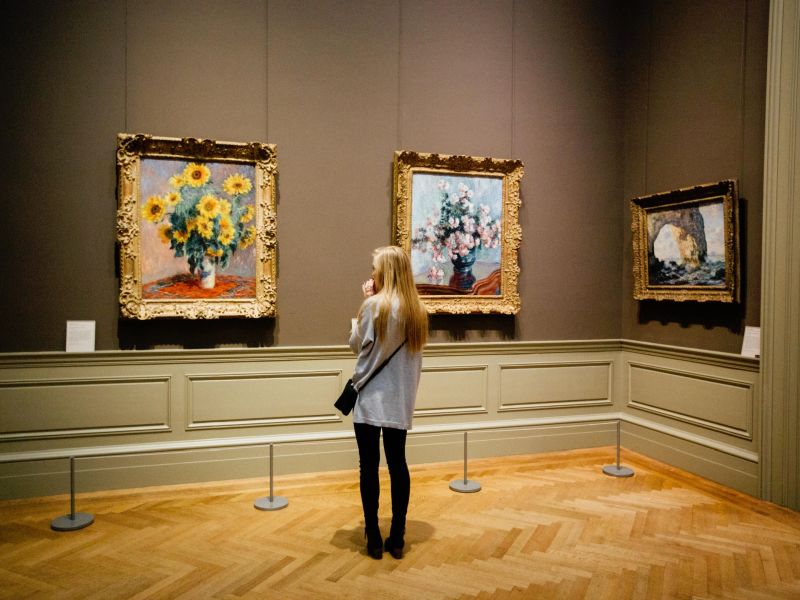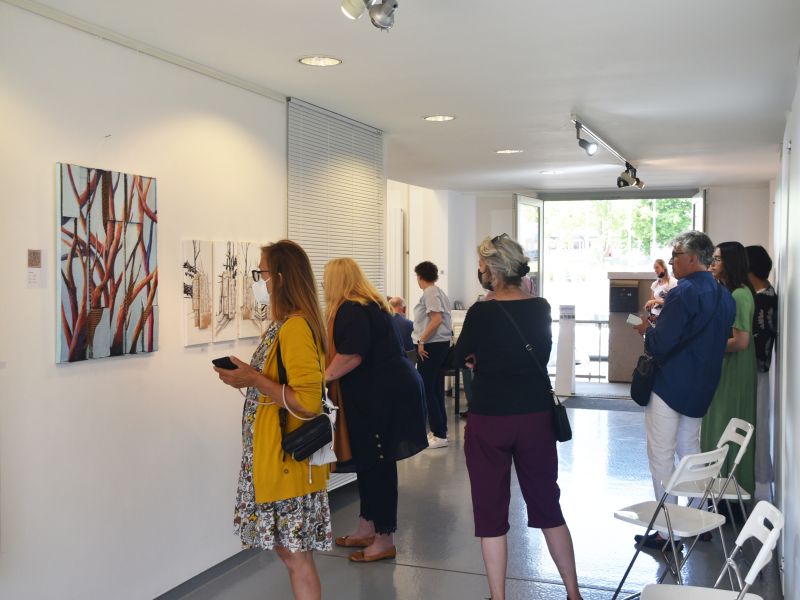Accessible exhibitions and museums are on the rise. Because accessibility is a legal and, above all, social obligation.
Of course, creating accessibility is often very time-consuming and expensive.
Especially when structural measures such as ramps, elevators and threshold-free crossings for people with mobility impairments are necessary.
This is often almost impossible for small museums. On the other hand, temporary exhibitions can simply be held in spaces that are already barrier-free.
But in both cases, it is often overlooked, that people with visual impairments also want to visit – for them – accessible exhibitions. And need not only a tactile guidance system, but also access to information about the exhibits.
The assumption that blind and visually impaired people would not visit exhibitions and museums anyway is simply wrong.
Many museums, especially large ones, have therefore begun to offer special guided tours for this target group. In these tours, objects on display are described by expert guides. Some exhibits can also be touched.
Of course, these special tours are only available on certain dates and by appointment. A spontaneous visit is therefore not possible. In that case, an accompanying person has to describe objects and read out the explanatory texts.
An alternative would be audio guides, preferably with detailed picture description (audio description).
However, the production of an audio guide with studio recordings is not only expensive. It also needs a relatively long lead time.
This is why audio guides are almost non-existent in smaller museums and temporary exhibitions.

Often, it is simply not possible to feel the paintings by touch. Then other solutions for accessibility are needed.
The fact that accessible exhibitions are nevertheless possible demonstrates Workgroup Posthorn with their exhibition “Blind Date” in Solingen, Germany:
The non-profit inclusion community for arts and crafts organized the exhibition with works of blind and sighted artists. It was clear from the beginning that it had to be an accessible exhibition, also or especially for people with visual impairments!
Tactile objects were one thing. Access to the explanatory texts was another.
During the research for this, SpeechCode came up.
Short exhibition duration, a small team, all volunteers, no money. These are often mentioned reasons, why an exhibition cannot be accessible.
All these reasons apply to the Workgroup Posthorn. Nevertheless, with a lot of personal effort, they have achieved something that does not exist even in many large museums.
The 1st chairman of the association, Gerd Boes found SpeechCode during his internet research.
The free test account showed: These talking codes are easy and quick to produce yourself.
The fact that non-profit organizations are allowed to use the SpeechCode technology for free was a nice surprise.
We activated access to our online generator so that Mr. Boes could enter the explanatory texts planned for each exhibit.
Then all that was left was to print out the completed Speech Codes and place them next to each object.
Due to the information on the invitation, many sighted and blind visitors already had the app installed on their smartphones. The accessible app is available for free in the app stores.
Everyone enjoyed the service of having the texts read to them!

Whether mobility or visual impairment: The exhibition “Blind Date” is barrier-free for all! Photo @ Werkgruppe Posthorn
How print media gain more reach with accessiblity
read moreZeroCon23 - THE event for the accessibility topic
read moreWhy Universal Design instead of special solutions is the right approach for inclusion
read moreShowcase of an accessible and inclusive hotel
read moreWhy the 2-senses principle is important and how to implement it
read moreFind out how Siri and Alexa promote sustainability in marketing
read moreRead the latest SpeechCode blogs and news on the topics Universal Design, Customer Focus and Digitalisation.
read more